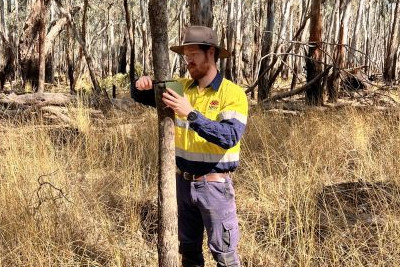Baseline survey
The koala baseline survey launched in 2022 and is scheduled to finish in 2026. It will provide the first baseline population dataset for koalas in New South Wales by surveying up to 800 locations in national parks, state forests, and private properties.
This survey is funded under the NSW Koala Strategy. It uses advanced monitoring methods, including heat-detecting drones and acoustic recorders, to evaluate koala distribution and gather data on occupancy patterns and population density.
Over 14 nights during the spring breeding season, acoustic recorders are deployed to record male vocalisations across sites known to be where koalas range. At a subset of these sites, drone surveys are conducted at night to count the number of kolas present.
Preliminary results are promising and show that 160 out of 641 acoustic recorders captured koala calls and 52 out of 246 drone surveys identified the corresponding presence of a koala. This data is being used to generate baseline results for the location and abundance of koalas throughout the state.

A drone set up for a night flight
Priority population monitoring program
The koala priority population monitoring program is an important long-term initiative focused on 20 priority koala populations identified in the NSW Koala Strategy. This program will enhance our understanding of long-term trends and changes in koala distributions at both regional and statewide levels.
The program began in 2023 and is designed to analyse patterns of koala occupancy and habitat suitability. It uses acoustic recorders to detect koala calls during the spring mating season and will assess environmental variables including soil and vegetation type, land usage and soil composition to understand patterns of occupancy.
Koala priority population monitoring areas have been chosen to provide insights into occupancy trends. These areas overlap with recognised regions of significance for koalas and represent the known geographic range of koalas in New South Wales. By focusing on stronghold populations, the program aims to detect meaningful changes in local koala populations.

Setting up an acoustic recorder